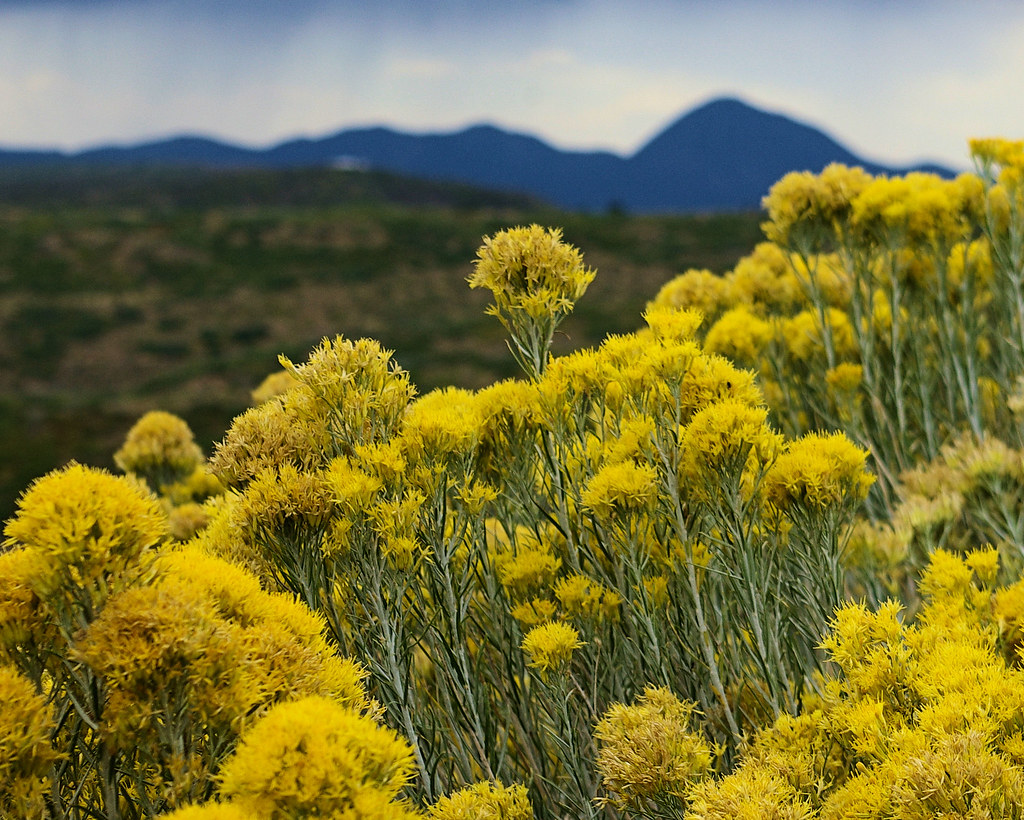Photography Now & Then #65
This is the same house photographed in Decaying & Grumpy, Photography Now & Then #20. Located on the right 1.6 miles from Interstate 40 heading north on Arkansas 7, this decaying building had been hidden from view by overgrowth for many years until the property was recently cleared.
Now: Deteriorating house north of Russellville, Arkansas, March 6, 2018 (Apple iPhone 6s)
______________________________________
The photo below is from our 2009 fall1 trip to Colorado.
Then: Rabbitbrush with Sleeping Ute Mountain in the background, Mesa Verde National Park, Colorado, September 14, 2009 (Pentax K10D)
Ericameria nauseosa (Wikipedia)
Ericameria nauseosa (formerly Chrysothamnus nauseosus), commonly known as Chamisa, rubber rabbitbrush, and gray rabbitbrush, is a North American shrub in the sunflower family (Aster). It grows in the arid regions of western Canada, western United States (from the western Great Plains to the Pacific) and northern Mexico.
Rubber Rabbitbrush (Ericameria nauseosa) (USDA Forest Service)
Rubber rabbitbrush is also known as gray rabbitbrush, or chamisa. This perennial shrub is a member of the Aster family (Asteraceae) along with sagebrush, with which it is often found. Rubber rabbitbrush is highly variable, with several different subspecies located throughout the western United States. It is typically distinguished by having whitish to green flexible stems, felt-like matted hairs, and narrow, thread-like grayish-green alternate leaves. Shrubs are rounded and generally two to five feet tall, but can reach as high as seven feet. Flower heads are made up of 5 small, yellow, tubular flowers, and are arranged in dense, rounded or flat-topped clusters at the ends of the branches. Flowers bloom from August to October as other plants are fading, providing vivid color and a pollen source for insects late in the summer. The shrubs reproduce via an abundance of small, wind-dispersed seeds and can also sprout from the base.
- I use meteorological seasons in my blog posts. Autumn (fall) is the season of the year that is the transition period from summer to winter, occurring as the sun approaches the winter solstice. Meteorological autumn (different from standard/astronomical autumn) begins September 1 and ends November 30.
Photography Now & Then Notes:
- Series Photos
- The Now photo is a one that is almost always taken the day of the blog post. In some instances, posts may be backdated if internet access is not available on the day of the photo or other reasons prevent posting Photography Now and Then.
- The Then photo is usually a randomly selected older photograph from a batch of photos specifically “curated” for Photography Now and Then.
- Each photo in this series is an “original work” – a copyright term – of Michael Goad.
- Reference links were accessed on the date the blog post was published, unless otherwise stated.
- The title convention for Photography Now & Then blog posts evolved early on from one word related to each photo separated by “&” to usually being the first word in the caption description for each photo.



